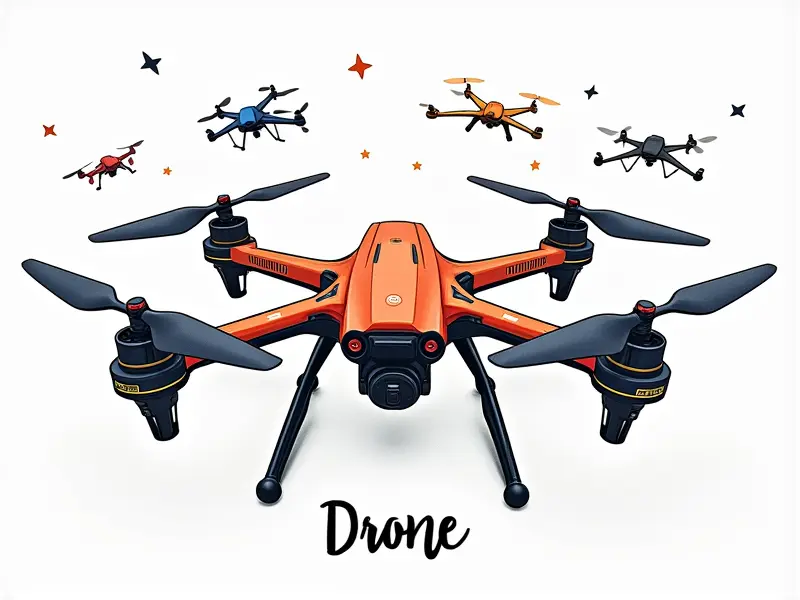Can drones detect heat?

Thermal Imaging Drones in Action
Drones equipped with thermal imaging cameras have become an invaluable tool for a variety of industries, from firefighting to wildlife conservation. These devices can detect heat signatures and provide real-time data that is crucial for making informed decisions.
The use of drones for thermal imaging has revolutionized the way we monitor and manage environments. Whether it's tracking down electrical faults in power lines or searching for lost hikers in dense forests, these unmanned aerial vehicles (UAVs) offer unparalleled flexibility and efficiency.
Using Drones for Heat Detection
The ability of drones to detect heat is not just a theoretical concept; it has practical applications across multiple sectors. For instance, law enforcement agencies use thermal imaging drones to locate suspects hiding in dark or obscured areas. Similarly, search and rescue teams rely on these devices to find individuals who might be trapped or injured.
Thermal detection by drones also plays a critical role in agriculture. Farmers can monitor crop health and identify issues such as pest infestations or water stress before they become major problems. This proactive approach helps farmers save resources and increase yields.
Heat Sensing Capabilities in Modern Drones
Modern drones are equipped with advanced thermal sensors that allow them to detect heat signatures accurately even under challenging conditions. These sensors work by capturing infrared radiation emitted from objects, which is then converted into a visual representation of temperature differences.
The latest models of drones feature high-resolution thermal cameras capable of detecting minute variations in temperature. This level of precision ensures that users can identify specific areas or objects of interest with great accuracy.
Drone Technology for Heat Detection
The technology behind heat-sensing drones involves sophisticated hardware and software solutions designed to optimize performance. Thermal sensors are integrated into the drone's frame, often alongside other imaging systems like RGB cameras, to provide a comprehensive view of the environment.
In addition to the thermal sensor itself, modern drones come with advanced data processing capabilities. This allows for real-time analysis of captured images and video feeds, enabling users to make immediate decisions based on the information gathered.
Thermal Cameras on RC Quadcopters
RC quadcopters are particularly well-suited for thermal imaging due to their maneuverability and stability. These small drones can navigate through tight spaces and maintain a steady position, making them ideal for detailed inspections of hard-to-reach areas.
The integration of thermal cameras into RC quadcopter designs has expanded the range of applications for these devices. From inspecting rooftops for leaks to monitoring wildlife in remote locations, the versatility of these drones is unmatched.
Detecting Heat Sources via Drone
One of the key advantages of using drones for heat detection is their ability to cover large areas quickly and efficiently. This makes them ideal for applications such as fire surveillance or industrial safety checks where rapid response times are critical.
The process of detecting heat sources with a drone involves flying over an area of interest while the thermal camera captures images. These images can then be analyzed to identify hot spots, which may indicate potential hazards like overheating machinery or structural issues in buildings.
The Science Behind Heat-Sensing Drones
The science behind heat-sensing drones relies on principles of thermodynamics and optics. Thermal cameras detect infrared radiation emitted by objects based on their temperature. This radiation is then converted into an electronic signal, which the camera processes to create a thermal image.
Understanding these scientific principles helps in optimizing drone operations for specific tasks. For example, knowing how different materials emit or absorb heat can aid in selecting appropriate flight paths and altitudes for optimal imaging results.
Heat Spotting with FPV Drones
Fully-featured drones (FPVs) equipped with thermal cameras offer real-time video feeds that allow operators to spot heat sources instantly. This capability is particularly useful in scenarios where immediate action is required, such as during emergency response situations.
The ability of FPV drones to provide live feedback enhances situational awareness and enables quick decision-making processes. Whether it's directing firefighters towards the hottest part of a fire or guiding search teams to potential victims, this technology can save lives.
Thermal Drones: Seeing Through the Cold
In cold environments, thermal drones have an even greater advantage as they can easily spot heat signatures against a background of low temperatures. This makes them invaluable for applications such as wildlife monitoring in winter or industrial inspections in freezing conditions.
The ability to see through the cold also extends to detecting hidden objects or individuals that might be camouflaged by snow or ice. Thermal drones can penetrate these challenging environments and provide critical information without risking human safety.
Drones Equipped with Heat Sensors
Heat sensors on drones are designed to operate in a wide range of temperatures, ensuring reliable performance under various environmental conditions. These sensors are calibrated to detect subtle temperature changes, making them highly sensitive to even minor heat signatures.
The integration of these advanced sensors into drone systems represents a significant leap forward in remote sensing technology. Users can now rely on drones for accurate and consistent data collection across diverse applications.
Drone Tech: Heat Sensing Capabilities
The future of drone technology is likely to see further advancements in heat-sensing capabilities, with increased resolution, faster processing speeds, and more intuitive user interfaces. As the demand for thermal imaging continues to grow, manufacturers are investing heavily in R&D to meet these needs.
With ongoing innovations, we can expect drones to become even more effective tools for detecting heat signatures. This will open up new possibilities in fields such as environmental monitoring, infrastructure inspection, and security applications.
Conclusion
The ability of drones to detect heat through thermal imaging has transformed numerous industries by providing a powerful tool for remote sensing and analysis. From emergency response to agriculture, the applications are vast and varied. As technology continues to evolve, we can anticipate even more sophisticated capabilities that will further enhance the utility of these devices.

